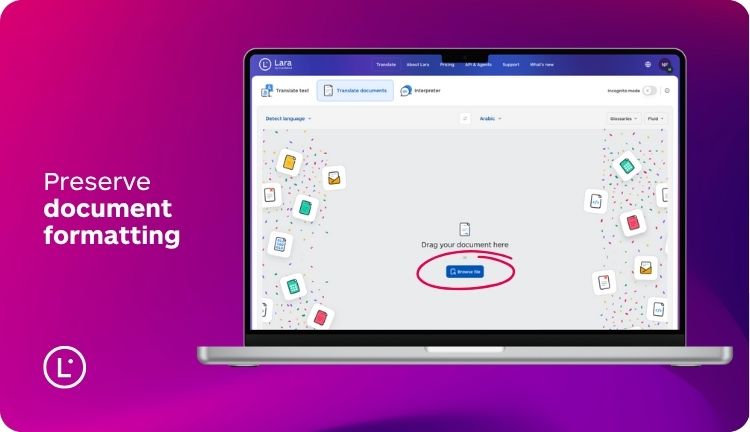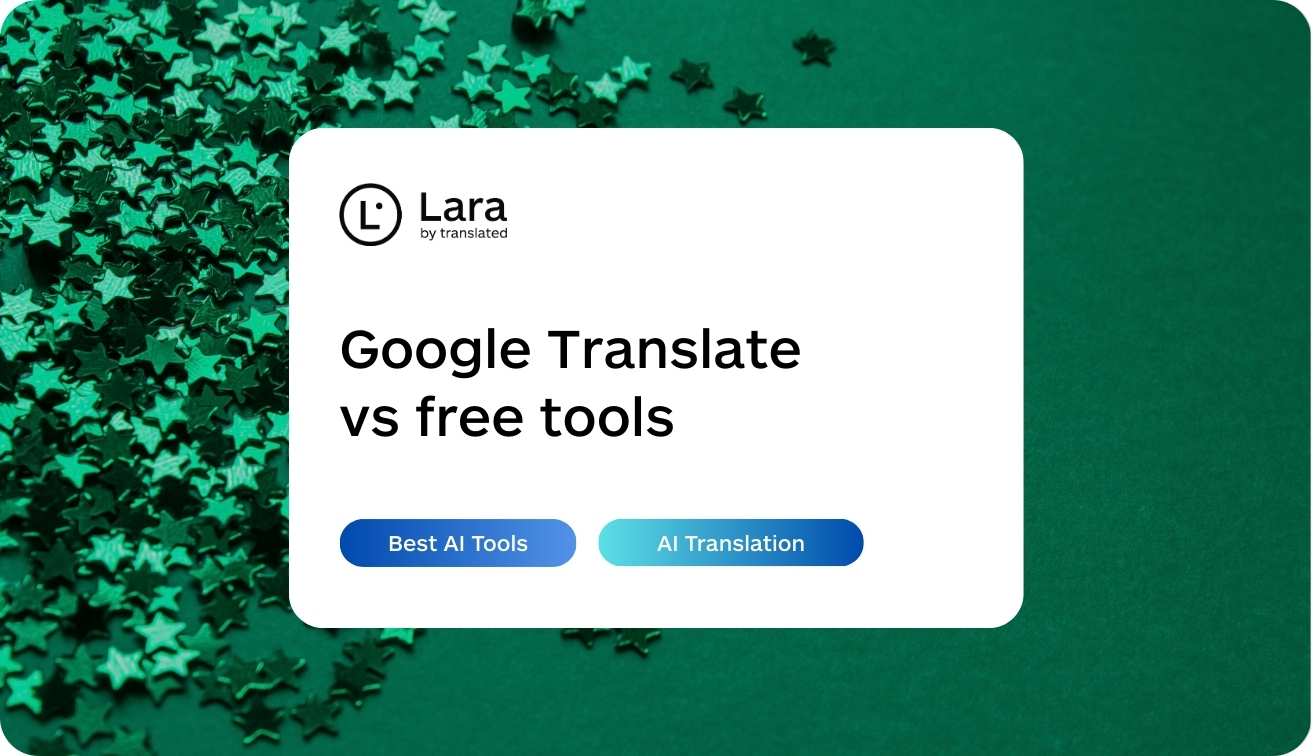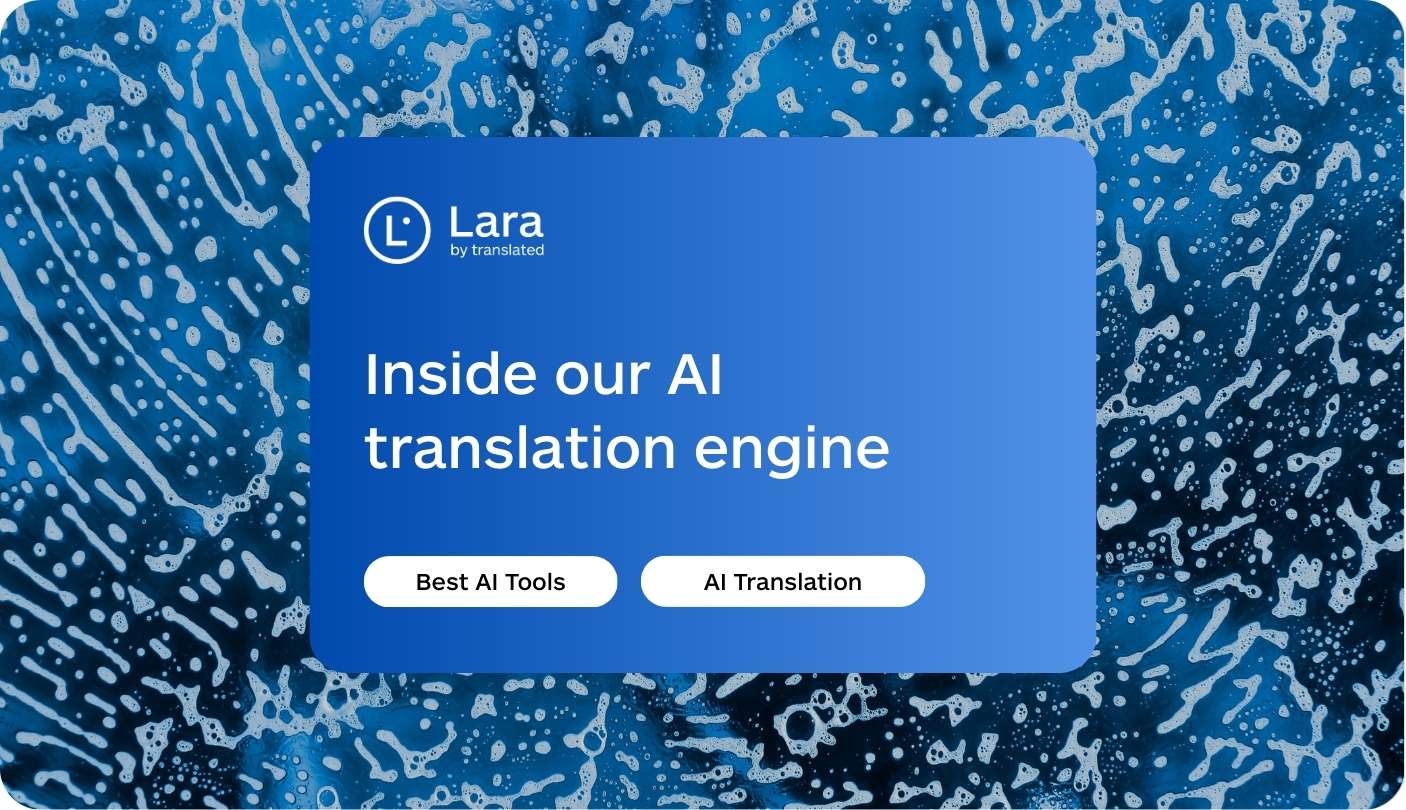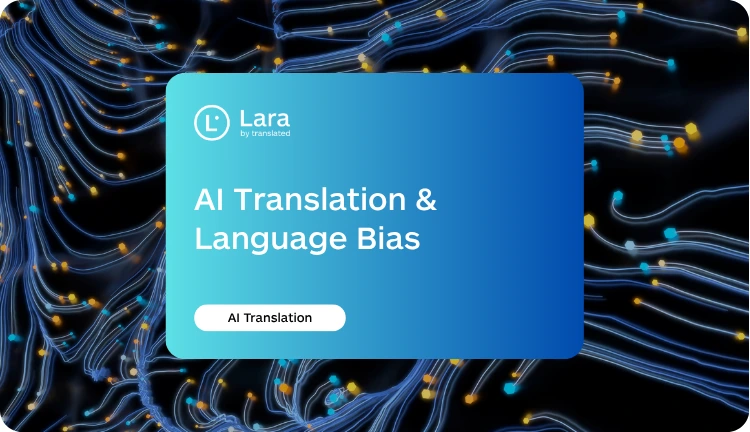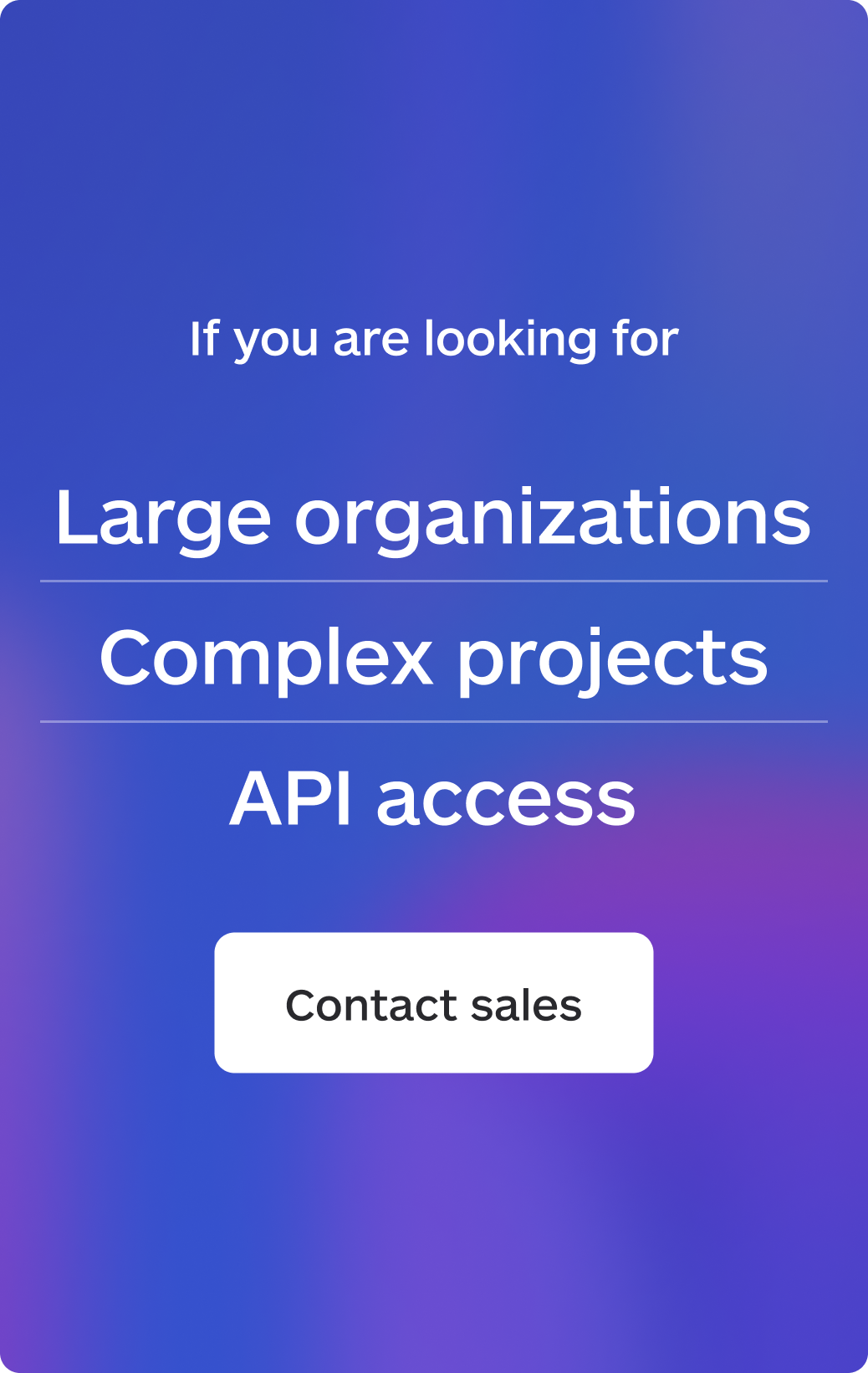When you’re working across countries and languages, translating documents quickly and accurately becomes a real part of everyday business. That’s where AI translation can really help; it makes it faster and easier to handle large amounts of content without getting stuck in slow, manual processes.

But AI isn’t perfect on its own. For more complex or sensitive documents, you still need human translators to make sure the meaning, tone, and cultural details come through the right way.
In this article, we’ll look at how AI can speed things up, where it needs a human hand, and how combining both gives you the best results.
Understanding AI document translation technology
Document translation tools with AI leverage sophisticated neural networks and machine learning algorithms to process and translate text while preserving formatting and layout. These systems have evolved significantly from simple word-for-word translation engines to context-aware platforms that understand industry-specific terminology and document structure.
The technology behind modern AI translation includes Natural Language Processing (NLP) capabilities that analyze sentence structure, identify key entities, and maintain coherence across languages. Advanced systems can handle complex document formats including PDFs, Word documents, PowerPoint presentations, and even scanned images through OCR and AI translation integration.
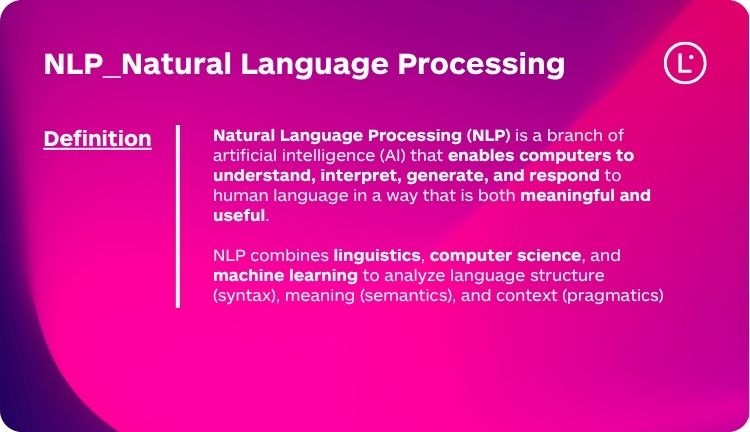
What sets professional AI translation platforms apart is their ability to learn from corrections and maintain translation memories. These systems build knowledge bases over time, improving accuracy for specific industries or organizations. This learning capability makes them particularly valuable for businesses with recurring translation needs or specialized terminology.
Key features of modern AI document translation platforms
AI document translation platforms have evolved to offer comprehensive solutions that address real-world business challenges. Understanding these features helps organizations make informed decisions about which tools best suit their specific needs.
Bulk file translation capabilities allow businesses to process multiple documents simultaneously, dramatically reducing the time required for large-scale translation projects. This feature proves invaluable during product launches, regulatory compliance updates, or when expanding into new markets where extensive documentation must be translated quickly.
Secure AI document translators implement enterprise-grade security measures including encryption during transit and storage, access controls, and compliance with data protection regulations. These security features are particularly important when handling sensitive documents such as financial reports, legal contracts, or confidential business communications.
Multilingual document handling extends beyond simple translation to include formatting preservation, right-to-left language support, and cultural adaptation considerations. Advanced platforms maintain the original document’s visual hierarchy while ensuring translated content fits naturally within the existing layout.
Integration capabilities allow these platforms to connect with existing business systems, document management platforms, and collaboration tools. This connectivity streamlines workflows and reduces the manual effort required to move documents between systems.
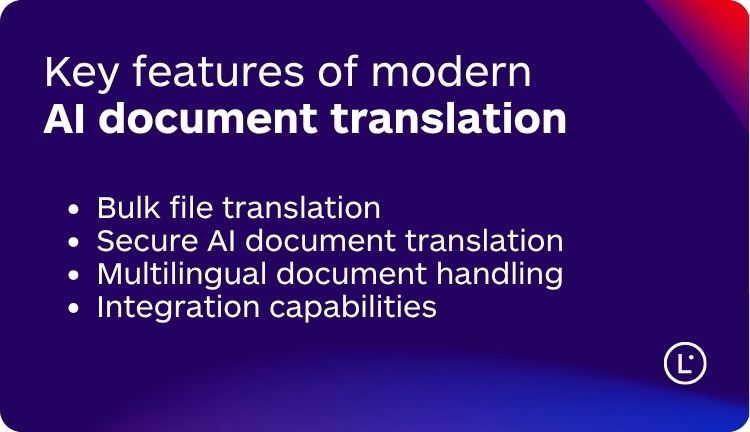
When to use AI for document translation
Determining when to use AI for document translation requires careful consideration of content type, urgency, and quality requirements. AI translation excels in several specific scenarios while remaining less suitable for others.
Batch document translation automation works exceptionally well for routine business communications, internal reports, and technical documentation where consistency matters more than creative interpretation. These scenarios benefit from AI’s ability to maintain uniform terminology and formatting across large document sets.
Time-sensitive translations represent another ideal use case for AI solutions. When businesses need quick turnarounds for regulatory filings, emergency communications, or time-critical business documents, AI translation provides rapid results that can be refined by human translators if necessary.
Standard document formats with structured content translate particularly well using AI systems. Technical manuals, product specifications, financial reports, and procedural documents contain predictable language patterns that AI systems handle effectively.
However, creative content, marketing materials with cultural references, and highly specialized legal documents may require more human involvement. The key lies in understanding your content’s complexity and the potential consequences of translation errors.
Industry-specific applications and considerations
Different industries have unique requirements for AI for PDF and Word translation that extend beyond basic language conversion. Understanding these sector-specific needs helps organizations implement more effective translation strategies.
How to translate legal documents with AI requires particular attention to accuracy and terminology consistency. Legal translation involves precise language where small errors can have significant consequences. AI systems excel at maintaining consistent legal terminology across documents but should always be paired with human legal expertise for final review and validation.

Healthcare organizations benefit from AI translation for patient information materials, research documentation, and regulatory submissions. However, medical translation requires careful attention to terminology accuracy and cultural sensitivity around health information.
Financial services utilize AI translation for regulatory reporting, client communications, and market analysis documents. The structured nature of financial documents makes them well-suited for AI translation, though regulatory compliance requirements often necessitate human oversight.
Manufacturing and technical industries find AI translation particularly valuable for user manuals, safety documentation, and technical specifications. These documents often contain standardized terminology that AI systems handle effectively while maintaining critical safety information accuracy.
Implementing AI translation in your workflow
Successfully integrating document localization into existing business processes requires thoughtful planning and gradual implementation. Organizations should start with pilot projects to understand how AI translation performs with their specific content types and quality requirements.
Enterprise document translation implementation begins with establishing clear quality standards and defining which document types are suitable for AI translation versus human translation. Creating these guidelines helps teams make consistent decisions about translation approaches while maintaining quality standards.
Training staff on AI translation tools and establishing review processes ensures that translated documents meet organizational standards. This training should cover both the technical aspects of using translation platforms and the qualitative aspects of evaluating translation quality.
Workflow integration involves connecting AI translation tools with existing document management systems, content management platforms, and collaboration tools. This integration reduces manual effort and creates seamless processes for handling multilingual documents.
Introducing Lara Translate: advanced AI translation technology
Lara Translate represents the next generation of AI-powered translation solutions, specifically designed to address the challenges businesses face with document translation. Built on advanced neural network architecture and trained on professionally curated datasets, Lara Translate delivers exceptional accuracy for business and professional contexts.
What sets Lara Translate apart is its focus on maintaining context and preserving document formatting while delivering translations that sound natural and professional. The platform supports different languages and offers specialized modes for different types of content, ensuring optimal results whether you’re translating technical documentation, business correspondence, or regulatory materials.
Lara Translate’s learning capabilities mean the system continuously improves its translations based on user feedback and corrections. This adaptive approach ensures that the platform becomes more accurate over time, particularly for industry-specific terminology and organizational preferences. For businesses seeking reliable, fast, and cost-effective document translation, Lara Translate offers a compelling solution that combines cutting-edge AI technology with practical business applications.
Measuring success and ROI
Evaluating the effectiveness of AI document translation involves tracking both quantitative metrics and qualitative outcomes. Organizations should monitor translation speed, cost savings, and accuracy improvements while also assessing user satisfaction and business impact.
Cost analysis should compare AI translation expenses against traditional translation costs while factoring in time savings and increased capacity for handling larger volumes of documents. Many organizations report significant cost reductions while maintaining or improving translation quality.
Quality metrics include accuracy rates, consistency across documents, and the amount of post-editing required. Tracking these metrics over time helps organizations understand how their AI translation implementation improves and where additional human involvement may be beneficial.
Business impact measurements might include faster time-to-market for international products, improved compliance with multilingual regulatory requirements, or enhanced communication with global teams and customers.
Security and compliance considerations
Secure AI document translators must address various security and compliance requirements, particularly when handling sensitive business information. Organizations should evaluate translation platforms based on their security certifications, data handling practices, and compliance with relevant regulations.
Data encryption during transmission and storage protects sensitive information throughout the translation process. Leading platforms implement enterprise-grade security measures including secure API connections, access controls, and audit trails for document processing.
Compliance considerations vary by industry but often include requirements for data residency, retention policies, and user access controls. Healthcare organizations may need HIPAA compliance, while financial services require adherence to various financial regulations.
Some organizations choose on-premises or private cloud deployment options for maximum control over sensitive documents. These deployment models provide additional security while maintaining the benefits of AI translation technology.
Best practices for AI document translation
Successful AI document translation requires following established best practices that maximize accuracy while minimizing risks. These practices have emerged from extensive real-world implementations across various industries and document types.
Document preparation plays a crucial role in translation quality. Clean, well-formatted source documents with consistent terminology produce better translation results. Organizations should establish style guides and terminology databases to ensure consistency across their document library.
Quality assurance processes should include both automated checks and human review, particularly for critical documents. Implementing review workflows helps catch potential errors while ensuring translated documents meet organizational standards.
Regular platform updates and feature utilization help organizations maximize their investment in AI translation technology. Staying current with platform capabilities and best practices ensures optimal performance and takes advantage of ongoing improvements in AI translation technology.
FAQs
What types of documents work best with AI translation?
Structured documents with standard business language work best with AI translation. This includes technical manuals, financial reports, procedural documents, and routine business correspondence. Documents with complex formatting, creative content, or highly specialized terminology may require additional human review.
How accurate is AI document translation compared to human translation?
AI document translation accuracy varies depending on language pairs, content type, and platform quality. Modern AI systems achieve high accuracy rates for structured business content, often requiring minimal post-editing. However, human translators remain essential for nuanced content and cultural adaptation.
Can AI translation handle confidential business documents securely?
Professional AI translation platforms implement enterprise-grade security measures including encryption, access controls, and compliance certifications. Organizations should evaluate platforms based on their specific security requirements and consider on-premises deployment for highly sensitive documents.
How much can businesses save using AI document translation?
Cost savings from AI document translation typically range from 60-90% compared to traditional translation methods, depending on document volume and complexity. Additional savings come from faster turnaround times and reduced project management overhead.
What’s the difference between free and paid AI translation tools?
Paid AI translation platforms offer enhanced security, customization options, format preservation, and professional support. Free tools may use submitted content for training purposes and lack the security features required for business use.
This article is about
- AI document translation technology and its applications in modern business environments
- Automated document translation benefits including speed, consistency, and cost-effectiveness
- Document translation tools with AI features and capabilities for enterprise use
- Security and compliance considerations for secure AI document translators
- Batch document translation automation and workflow integration strategies
Have a valuable tool, resource, or insight that could enhance one of our articles? Submit your suggestion — we’ll be happy to review it and consider it for inclusion to enrich our content for our readers!
Useful articles

